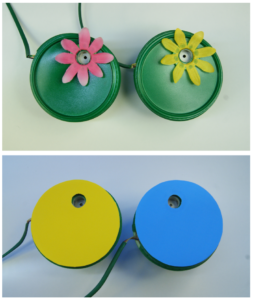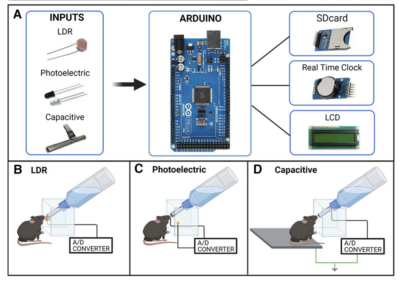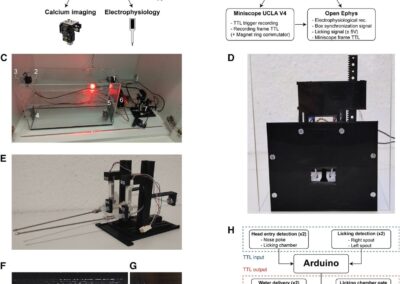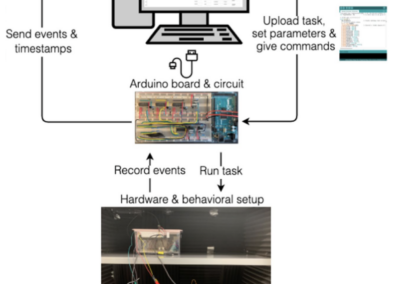Robotic Flower System for Bee Behavior
Erno Kuusela and Juho Lämsä, from the University of Oulu in Finland, have shared their design for an open source, computer controlled robotic flower system for studying bumble bee behavior.
Oh.. to be a honey bee.. collecting nectar from a robotic flower.. of open source design… splendid. As with behavioral studies from species common to neuroscience (rodents to drosophila to humans or zebrafish, etc), data collection for behavioral studies in bees can be time-consuming and sensitive to human error. Thanks to the growth in the open source movement, it’s easier than ever to develop hardware and software to automate such studies, which is what Kuusela and Lämsä have demonstrated in their publication. They developed a system of robotic flowers to study bee behavior. Their design features a control unit, based on an Arduino Mega 2560, which can collect data from and send inputs to up to 32 individual robotic flowers. Each flower contains its own servo controlled refill system. The nectar cup (in this design, a phillips screw head that can hold 1.7 uL!) is attached to servomotor’s shaft via a servo horn which, when prompted by the program, dips the cup into the flower’s individual nectar reservoir. The flower is designed in a way to capture data when an animal is feeding by the placement of IR beams that are broken when engaged on the flower’s feeding mechanism and sends data to the control unit. A covering on the system can be marked with symbols to attract bees. Custom control software is available on an open source license to be used as is, or modified to fit an experimenter’s needs. While developed and tested with bumble bees, the system can also be adapted for a number of species.
This research tool was created by your colleagues. Please acknowledge the Principal Investigator, cite the article in which the tool was described, and include an RRID in the Materials and Methods of your future publications. RRID:SCR_021584
Find Out More!
Read more about specifics of this system in Kuusela & Lämsä (2016). The circuit diagrams, parts list, and control software and source code are available in the paper’s supplemental information.
Check out projects similar to this!






